This article shows how to add an MU connector to the rear pilot of a USA Trains GP-9 so you can use a power and control car to run it.
As the track power wiring will be unplugged during this project, it will require a power and control car to run it. A power and control car is simply a battery car with a receiver added for on-board radio control. To view an article on how to build a Power and Control Car, just click on the link.
Nothing in this project prevents this locomotive from being restored to its original condition for re-sale at a later date
While this project deals with a specific locomotive, the principles should be the same for most USA Trains four-axle diesels.
REMOVING THE TRACK POWER SLIDERS
While it is not necessary to remove the track power sliders, they are redundant on a battery powered locomotive. Removing them will improve the appearance of the GP-9, provide a chance to lubricate the drive gears, and check the drive gear axle sleeves for splits.
Remove the railings from the sides and ends of the locomotive to prevent possible damage and set them aside for now.
HINT: A small, flat screwdriver can be used to pry the stanchions from their holes in the frame. A piece of vinyl tape over the head of the screwdriver may prevent the paint from being scratched.
Place the locomotive upside down in a soft cradle taking care not to damage the horns. Remove the six screws (circled in red) from the bottom of each motor block and remove the bottom covers.
Remove the small chrome screw (circled in red) from each track slider bracket. Lift out the track sliders and the track power axle wipers (indicated with yellow arrows) sprung between the axles.
The track sliders and axle wipers are the only components removed during this project. Place the sliders and wipers in a Ziploc bag labeled with GP-9, as well as, the diesel’s road name and number. Tape it in a pocket of the locomotive’s Styrofoam packaging.
Lift the axle sets out. If you can gently turn a wheel while holding the other, the axle sleeve on the drive gear is split. They can be fixed using the method in the DRIVE GEAR AXLE SLEEVES repair tip, or replaced with complete axle assemblies from USA Trains.
If required, lubricate the drive gears with plastic compatible grease. Place the axle assemblies back in the motor blocks. Ensure their bushings are seated flat [O] in the slots in the sides of the motors blocks. Ensure the worm gears on the motor shafts and the drive gears on the axles are properly meshed. The wheels should not turn.
Pop the covers back on and fasten them with their screws. Do not fully tighten any of the screws until all the screws have been inserted and turned down some. If you fully tighten the screws as you go, the last few may be hard to insert and may strip the threads in the plastic motor block.
REMOVING THE SHELL
Remove the screws holding the coupler brackets and couplers to the frame. Install the coupler bracket screws back in the frame so they do not get lost or mixed up with others.
Remove the two small screws from the base of the fuel tank. Remove the fuel tank and install the crews back in the frame so they do not get lost or mixed up with others. Place the couplers in the fuel tank and set them aside for now.
Remove the four short screws indicated with yellow arrows that hold the battery boxes to the frame.
Remove the ten screws circled in yellow which hold the shell to the frame. These are hidden in deep holes and require a long, number 1 Phillips screwdriver to extract them.
- Four are in the long hood truck area.
- Four are in the fuel tank area.
- Two are in the short hood truck area.
Turn the locomotive over. Carefully lift the shell from the front of the long hood. The long hood, cab, battery boxes and short hood will lift off as one piece. Do not lift them off too far or the wiring may unplug.
Install the four screws back in the battery boxes and the ten screws back in the hoods and cab so they do not get lost or mixed up with others.
DISCONNECTING THE TRACK POWER PICK-UPS
It is imperative that the track power pick-ups be disconnected so that the locomotive cannot pick up track power or feed battery power into the tracks. The result could be electronically catastrophic.
There should be two connectors from the motor block under the short hood, but only one connector has two red wires and two black wires attached to one side of it. This connector provides the power distribution board with track power from the short hood truck. Unplug it to disconnect these track power pick-ups.
There should be two connectors from the motor block under the long hood, but only one connector has two red wires and two black wires attached to one side of it. This connector provides the power distribution board with track power from the long hood truck. Unplug it to disconnect these track power pick-ups.
INSTALLING THE MU CONNECTOR
Two, 2-pin connector sets are required for this project. They are available from All Electronics under part number CON-240. OVGRS member can purchase them by contacting Paul Norton.
As this CNR GP-9 is run long hood forward, the MU connector was added to the short hood pilot. If your GP-9 is run short hood forward, mount the MU connector on the long hood pilot.
Drill a 1/8th inch hole in the center of the pilot between the coupler cut-bar and the grab rail.
Drill a 1/8th inch hole in the top of the frame opposite the screw holding the coupler return spring.
As only the male halves of the four All Electronics connector sets are needed for this project. Unplug the female halves and set them aside. They can be used for power and control car connectors or lithium-ion battery pack charging connectors in other projects. Hereafter the male halves of the sets will be referred to as the AE connector.
Slide a 1/2 inch length of shrink wrap over the wires of an AE connector until it reaches the back of the connector. With the tab of the connector facing up, feed the wires over the coupler cut bar and through the holes in the pilot and the frame. The shrink wrap will provide the proper spacing for the connector and the coupler cut bar will prevent it from falling on the coupler.
Insert another AE connector into the connector that leads from the either the short or long hood to the GP-9 main circuit board.
Although the wire colours on the connector sets sold by All Electronics may not positioned the same as on USA Trains connectors, there is no need to change the position of the wires over as the polarity will change with each change of direction of the locomotive.
Gather the ends of the wires of the two AE connectors and trim them to length. Strip 1/4 inch of insulation off all four wires. Slip a 3/4 inch length of shrink wrap over one of the red wires, and over one of the black wires. Solder the red wires together. Slip the shrink wrap down over the joint and warm until it seals. Repeat for the black wire.
THAT’S IT! You have completed the installation of a MU connector on your USA Trains GP-9. All that’s left to do is test to ensure it is wired correctly before re-installing the shell.
TESTING THE MU CONNECTOR
Plug a power car into the MU connector. Test to ensure the headlights and motors are working properly.
If the lights do not work, add a Crest Electronics PWC to Linear DC Board in the wires of the MU plug on the trailing power and control car. OVGRS members can purchase the PWC to Linear DC Board by contacting Paul Norton.
When the motors and lights function as they should; the shell, fuel tank and couplers can be replaced using the disassembly instructions as a guide. When installing the shell to the frame, all the wires should be inside the mounting posts so they do not get pinched between shell and the lip of the frame.
CONGRATULATIONS! The MU connector will allow you to run your GP-9 with a power and control car and enjoy all the benefits of battery power and radio control.




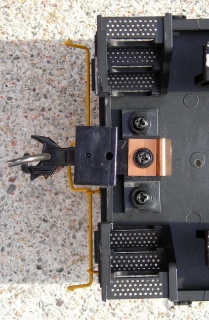

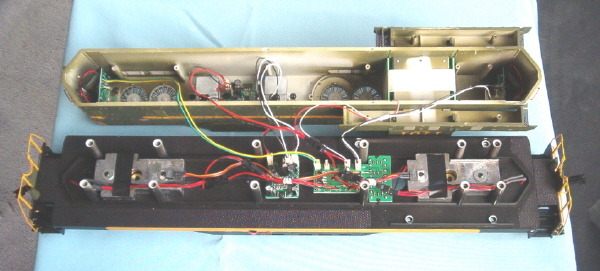
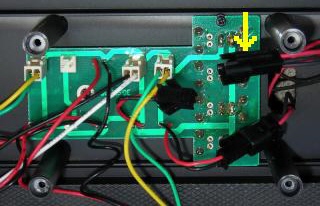
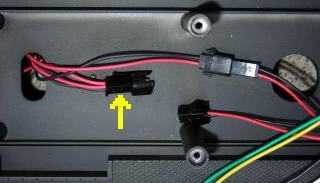

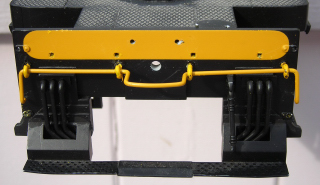
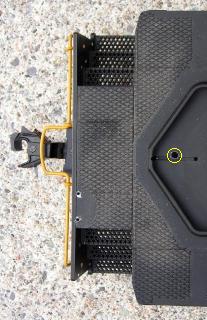

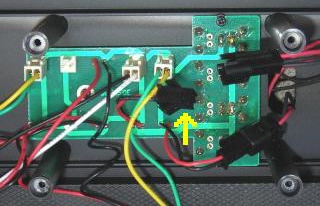
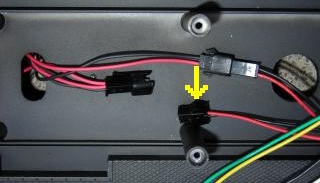
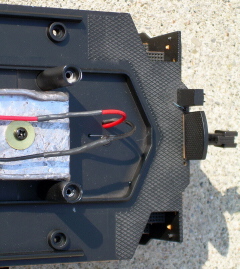
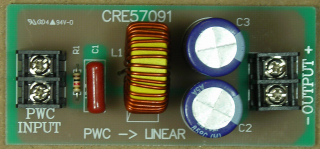
2 comments
Steve, I am not familiar with the AirWire drop-in, as I have not done an installation with one.
I have posted your question and a more detailed answer on Large Scale Central.
http://www.largescalecentral.com/forums/topic/23453/-/view/post_id/277824
I am sure there are people there that can provide the necessary information.
Paul, I have a GP9 with Airwire drop in and a 14.8 volt, 5200 mAh battery. Would it be possible to mu it to another GP9, using the method you outlined for the GP9? In other words, use the battery powered, R/C GP9 as a battery car with an esc, to run them both.
What modifications would I need to make to each?